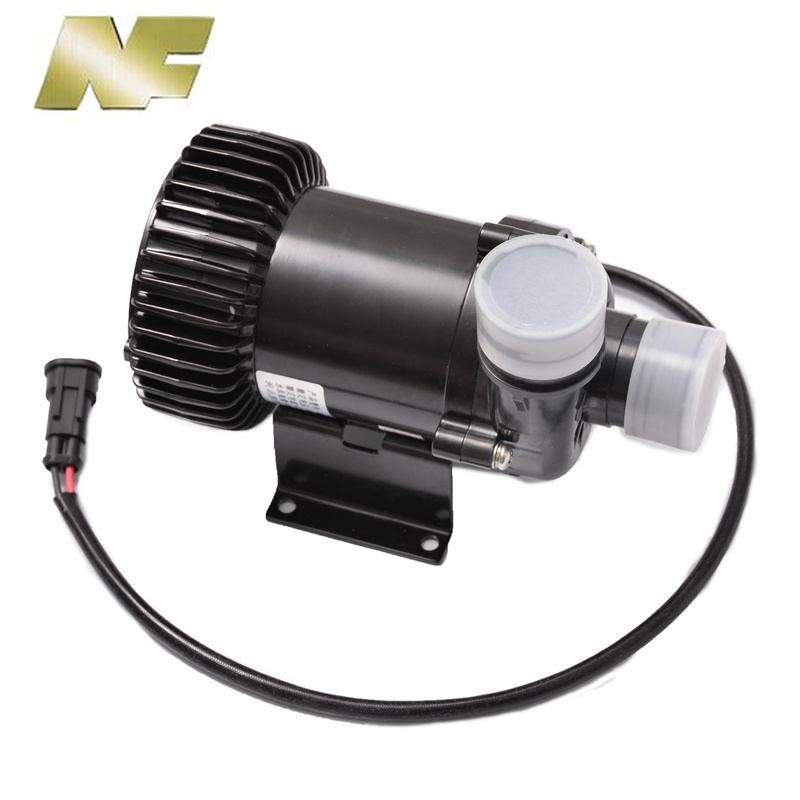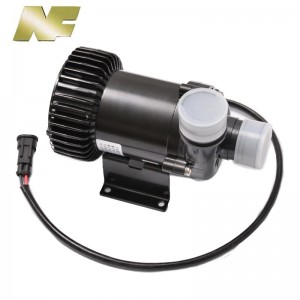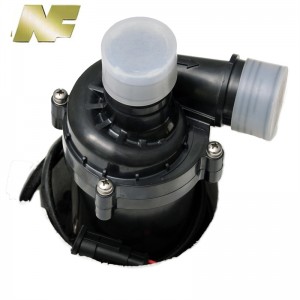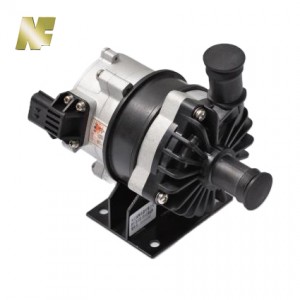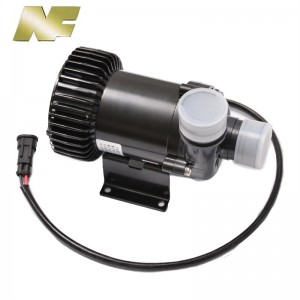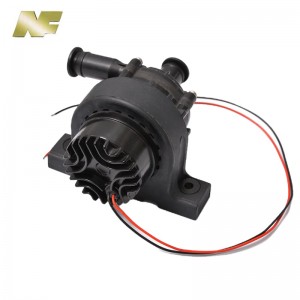NF DC24V Electric Water Pump For Electric Vehicle
Description
The rapid adoption of electric vehicles (EVs) in recent years has led to advancements in various components of their powertrain systems. Electric water pumps are one of them, playing a key role in ensuring efficient and reliable cooling of these vehicles. In this blog post, we will explore the benefits of using electric water pumps in automotive applications, with a particular focus on 24V electric water pumps for electric vehicles.
Traditionally, internal combustion engine (ICE) vehicles employ mechanical water pumps driven by belts, which are rather inefficient and result in unnecessary power losses. However, the advantage of electric vehicles is the use of electric water pumps to optimize the cooling process and improve overall performance. The 24V electric water pump is a key component designed to meet the unique cooling needs of electric vehicles.
One of the significant advantages of electric water pumps for electric vehicles is their energy efficiency. Unlike mechanical water pumps that run continuously, electric water pumps can be precisely controlled according to the cooling needs of the vehicle. The ability to fine-tune the pump speed and water flow ensures that the pump consumes only the power it needs, reducing energy waste. This efficiency helps extend the range of electric vehicles, which ultimately benefits drivers.
Another major benefit is reduced mechanical complexity. Mechanical water pumps in internal combustion engine vehicles require regular maintenance and can fail due to wear and tear. Electric water pumps in electric vehicles, on the other hand, have fewer moving parts, making them more reliable and less prone to mechanical failure. The reduced complexity not only improves the life of the water pump, but also reduces maintenance costs for EV owners.
In addition, the 24V electric water pump for automotive applications is compact in size and can be flexibly installed in the vehicle engine compartment. Its compact design ensures efficient use of space and optimal integration with other vehicle components. As a result, EVs can achieve better weight distribution and improve overall performance.
In conclusion, electric water pumps have become a key component in improving the efficiency, reliability and performance of electric vehicles. 24V electric water pumps for automotive applications overcome the limitations of traditional mechanical pumps, providing optimized cooling while minimizing energy consumption and maintenance requirements. As the world moves increasingly towards sustainable mobility, the innovation and adoption of electric water pumps in electric vehicles demonstrates their importance in shaping a green future.
Technical Parameter
| Ambient temperature | -40℃~+95℃ |
| Mode | HS-030-512A |
| Medium (antifreeze) Temp | ≤105℃ |
| Color | Black |
| Rated Voltage | 24V |
| Voltage Range | DC18V~DC30V |
| Current | ≤11.5A (when the head is 6m) |
| Flowing | Q≥6000L/H (when the head is 6m) |
| Noise | ≤60dB |
| Waterproofing Grade | IP67 |
| Service life | ≥35000h |
Advantage
*Brushless motor with long service life
*Low power consumption and high efficiency
*No water leakage in magnetic drive
*Easy to install
*Protection grade IP67
Application
It is mainly used for cooling the motors, controllers and other electrical appliances of new energy vehicles (hybrid electric vehicles and pure electric vehicles).

FAQ
Q: What is an EV electric water pump?
A: An EV electric water pump is a component used in electric vehicles (EVs) to circulate coolant throughout the vehicle's cooling system. It helps regulate the temperature of the motor and other critical components, preventing overheating and ensuring peak performance.
Q: How does the EV electric water pump work?
A: Electric water pumps operate by using an electric motor to drive an impeller, which pushes coolant through the system. The impeller creates centrifugal force that draws coolant out of the radiator and circulates it through the engine and other heat-generating components, effectively dissipating heat.
Q: What are the advantages of using an EV electric water pump?
A: There are several advantages to using an EV electric water pump. First, it can precisely control the flow of coolant, increasing the efficiency of the cooling system. Additionally, since the electric water pump runs on electricity, it eliminates the need for mechanical belts, pulleys, and direct engine power, increasing the overall efficiency of the vehicle and reducing energy consumption.
Q: Can an EV electric water pump increase the range of an electric vehicle?
Answer: Yes, electric vehicle electric water pumps can help increase the range of electric vehicles. By efficiently managing the operation of the cooling system, it reduces the energy required to maintain optimal temperatures, allowing more electricity to be used to drive the vehicle instead of cooling components. As a result, the overall range of EVs may increase.
Q: Are there different types of EV electric water pumps?
A: Yes, there are different types of electric water pumps on the market. Some pumps are designed for specific car models, while others are more generic and can be adjusted to fit various EV configurations. In addition, there is a variable-speed electric water pump that adjusts coolant flow according to the cooling needs of the vehicle, further optimizing efficiency.

